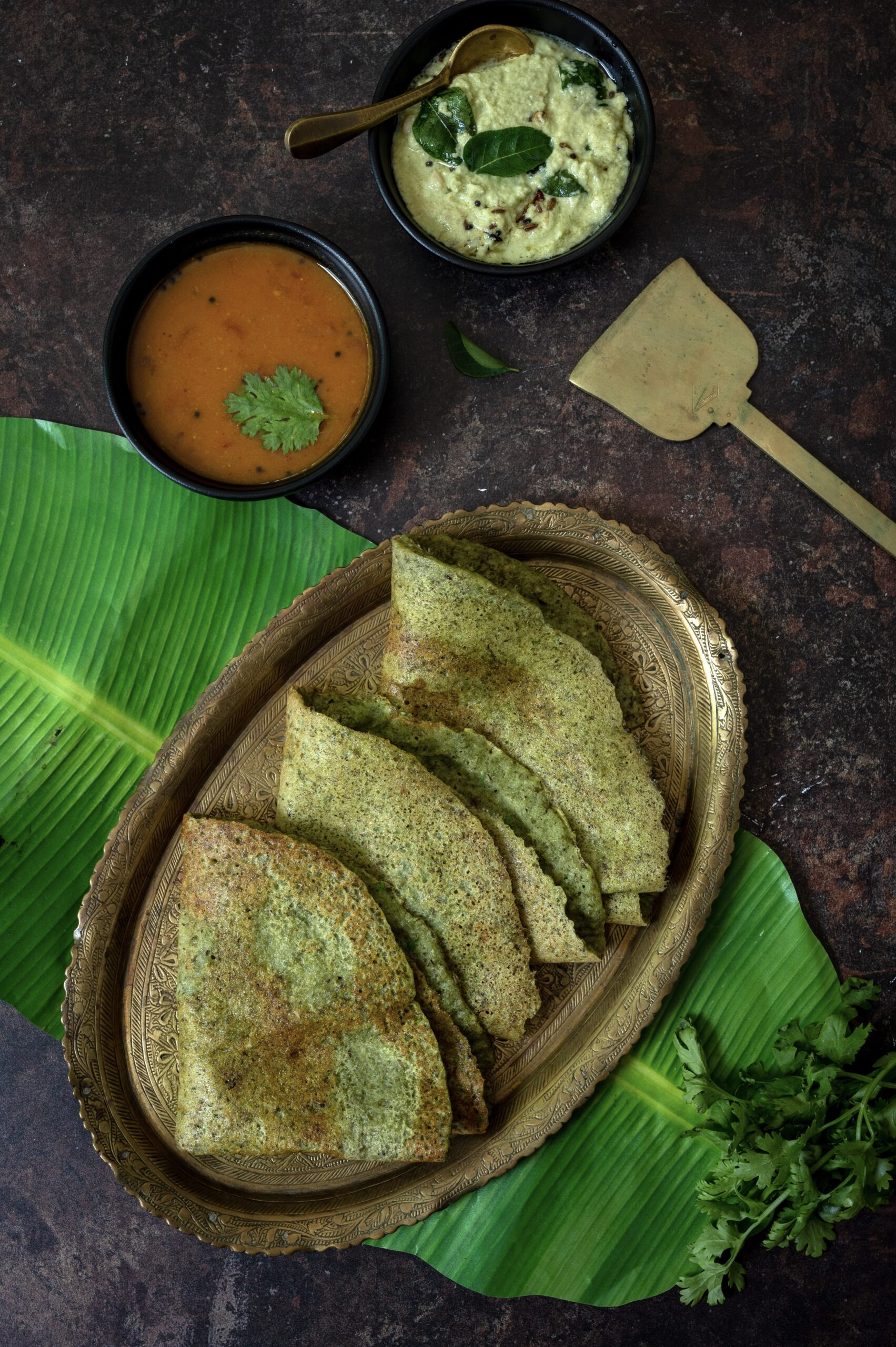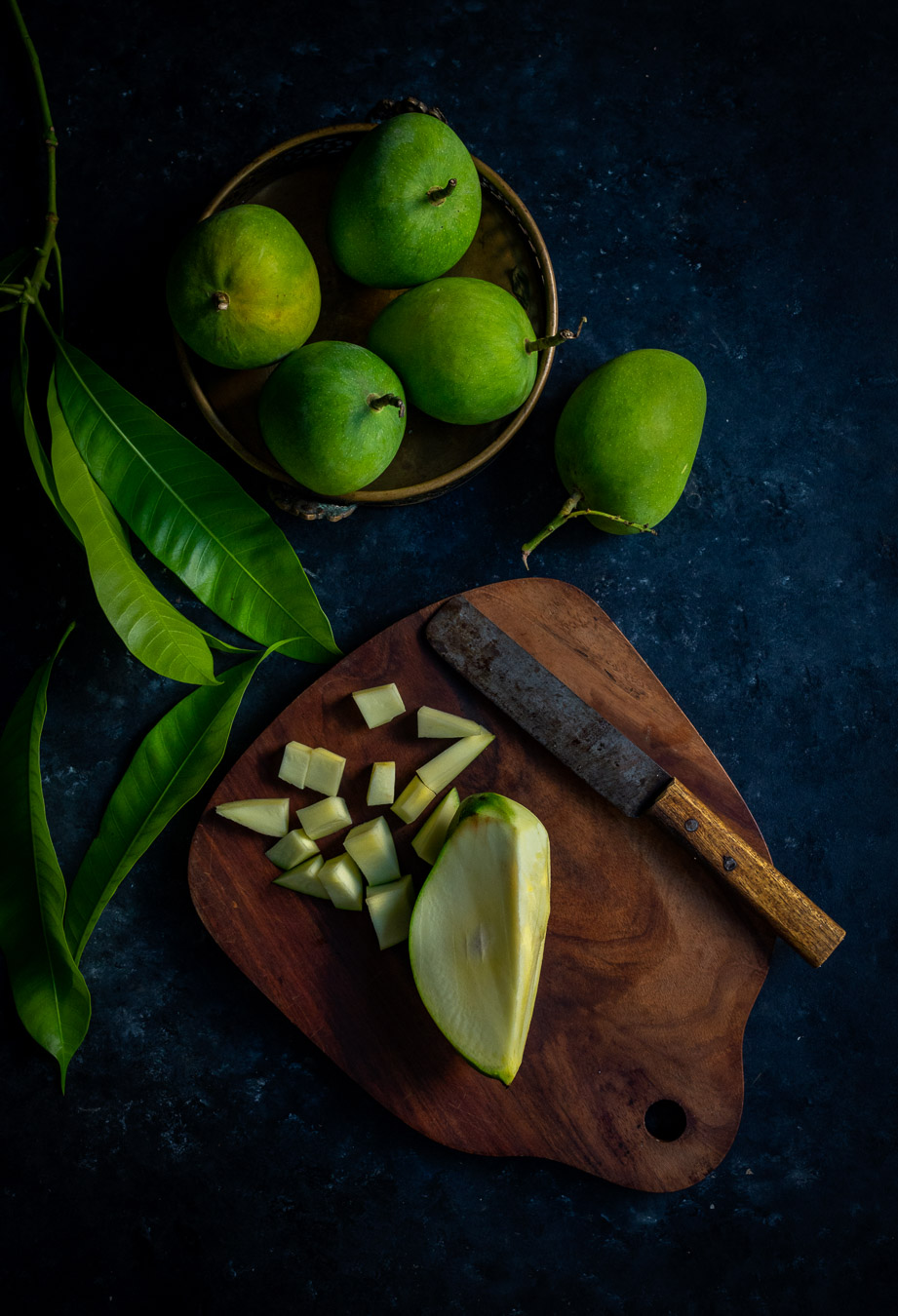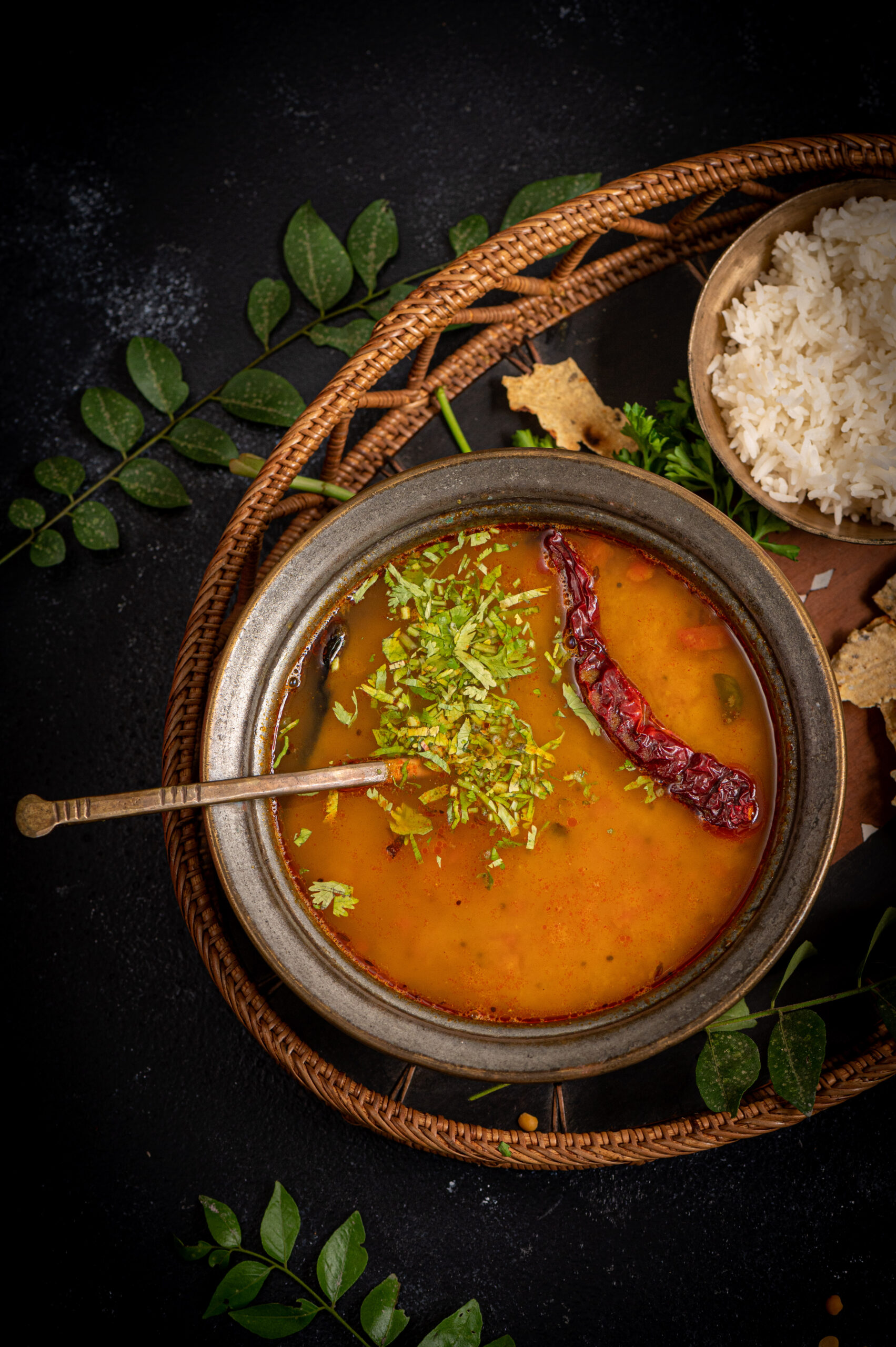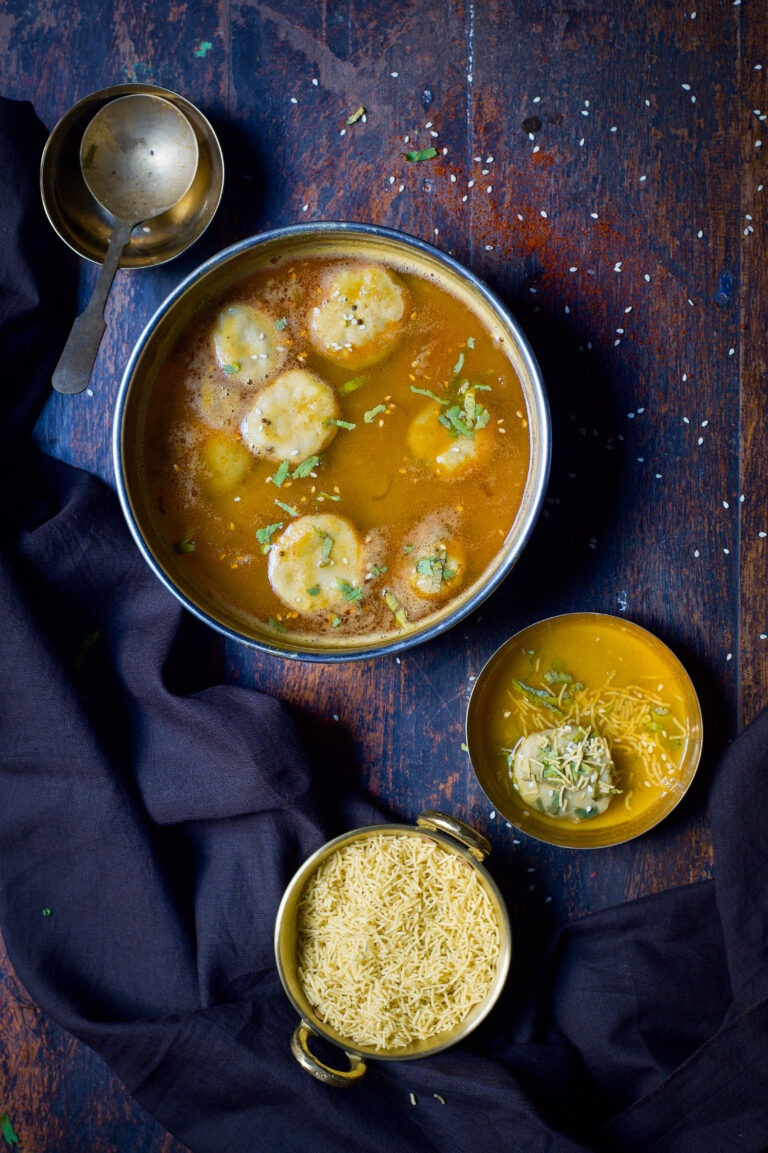On our first wedding anniversary, decades ago now, my husband and I went out to dinner with our entire family. We went to a lovely fine dining restaurant in Chennai which serves South Indian fare. It was during this evening that I tasted tomato pappu for the first time. I relished it. While I have eaten it numerous times since, over the years – although not very frequently, because this is still a place that we save for special occasions – it took a long while before it occurred to me to try replicating it at home, which I did only recently. It surprised me to learn that at its heart tomato pappu is a very simple dish, using everyday ingredients and requiring a familiar preparation style. I’m glad to be able to share it with you too.
Tomato pappu is essentially a dal which has equal quantities of tomatoes and lentils. It originated in Andhra Pradesh. Telugu cuisine is not one I know much about, but I am eager to learn more, and I think this dish is a good place to start.
Interestingly enough, while I have lived in Tamil Nadu all my life, my mother had grown up in Vijayawada, in Andhra Pradesh. But when I first took her for a meal at this restaurant and ordered tomato pappu, it turned out to be her first exposure to it. While she spoke the language and knew the culture well, she had also been brought up in a very traditional Gujarati household and it was clear that Telugu food itself was a bit unfamiliar to her. It was lovely to introduce her to a dish from the region she grew up in. She had a curious mind that I inherited, and I remember her saying, “We should learn how to make this too.” Like me, she had absolutely loved it.
I went back to that restaurant recently, and only then did I decide to make good on my mother’s suggestion and finally learn to prepare tomato pappu. Although my dear mother is no longer around to enjoy it with me, the dish is imbued with so many memories over the years of celebratory meals with loved ones. Now that I have begun to make it at home, we will no doubt savour it more often, and it will come to be a part of even more of our experiences together.
As I sit here and write this post, my curious side emerges yet again, and I wonder whether the tomatoes can be replaced with some other vegetable. This is what I do all the time at home and for the re:store blog – innovating existing recipes while also exploring traditional ones. I’m thinking that carrots or perhaps spinach would be good substitutes. Both will certainly be healthy and tasty. I’ll keep you posted about how my experiments go, as always.
That’s the thing about cooking: one can get so very creative in the kitchen. Once you have mastered the basics, you can use your intuition and expand your repertoire. It’s all about having a sense of which ingredient might work, which flavour, what goes well with something or really doesn’t. For instance, I would not attempt a capsicum pappu as I am dubious about if that might work. At the same time, I’ve been marvellously surprised by dishes I’ve tasted around the world that bring seemingly incongruous elements together. The challenge is finding out what is complementary, through trial and error. Sometimes, though, you just know something will work, and it does.
When I think back to how I didn’t know anything about this delicious tomato pappu when I first tasted it, and couldn’t even identify its ingredients beyond tomatoes, I can see what a long way I have come in my culinary life. Now, this dish is no longer something I eat only at restaurants. It’s become something even better: a part of my regular meals.

Tomato Pappu
(Yield: Serves 2-4)
½ cup toor dal
2 cups water
2 medium-sized tomatoes
3 cloves garlic
A handful of curry leaves
Pulp from a lime-sized ball of tamarind
Salt to taste
½ teaspoon turmeric
1 teaspoon red chili powder
2 green chillies
1 tsp grated ginger
½ teaspoon asafoetida
2 teaspoons oil
Tempering
1 tablespoon ghee
1 teaspoon mustard seeds
1 teaspoon cumin seeds
¼ teaspoon asafoetida
1 dry red chili
Rinse and clean the dal. Add the dal to water and turmeric powder and pressure cook until tender. Set aside.
Heat a kadai. Add the oil. To this, add ginger, garlic, curry leaves, asafoetida, turmeric powder and salt. Sauté for a few minutes. Next, add the tamarind pulp. Allow to cook a little and then add the tomatoes.
Sauté until the tomatoes are tender. Mash it all well together.
Now, add the dal mixture and give it a good stir. Allow to cook a little. Set aside.
Prepare the tempering by adding ghee to a heated kadai, then adding all the remaining ingredients. Once the seeds splutter, add the tempering to the dal mixture.
Serve this tomato pappu hot, with rice. I also find that it pairs nicely with dosa or idiappam. If you’re a fan of dals or of South Indian cuisines more broadly, there are many more recipes on this blog for you to enjoy!







































